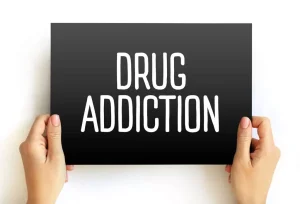Drug Detox Types: Natural & Medical Detoxification

This structure was represented in ODEs (Eqs 1–10, Methods), parameterised from the literature (Table 2), and simulated from appropriate starting values (Table 1) to give output shown in B–E. Panels B–E are plotted for 5 initial glucose concentrations (range 55 – 1,100 mg L-1 as shown in legend), initial glucose concentration indicated by line colour. EGlc, external glucose concentration; ODE, ordinary differential equation; ROS reactive oxygen species. While detoxification helps to eliminate the physical symptoms of addiction, most patients will need additional medical and psychological assistance.
- An unhealthy gut created by unhealthy lifestyle choices can trigger many physical health problems.
- Approximately 1 in 500 people die from ultra rapid detox, according to the Coleman Institute.
- Poor sleep has links to short- and long-term health consequences, such as stress, anxiety, high blood pressure, heart disease, type 2 diabetes, and obesity (16, 17).
- Black line and shaded area show fitted relationship and 95% confidence interval, respectively, of a mixed effects model accounting for random effects of experimental block and plate.
Model C—Constant dGTP oxidation, regardless of ROS concentration

After a full 24 hours, more severe symptoms may occur as well, like seizures or delirium tremens in the case of alcohol use disorder. Possibly the most important benefit of detoxing can be supporting your body in healing from the effects of dependency. The length of detox generally depends on the substances, since each substance leaves your system at a different rate.
Alcohol & Drug Detox Process: How to Find Detox Centers Near Me

However, popular detox diets rarely identify the specific toxins they aim to remove or the mechanism by which they supposedly eliminate them. However, the body “detoxifies” itself naturally and doesn’t actually require special diets or expensive supplements to eliminate toxins. Alcoholism usually causes deficiencies in vitamin B6, thiamine and folic acid.
- Preventing withdrawal symptoms involves medical drug detox, gradually tapering off the substance while managing symptoms.
- Attempting to detox alone at home carries significant risks due to the lack of medical support.
- As with most experiments demonstrating DAMP [3,27], final population density is controlled by varying initial external glucose.
- Substance addiction and withdrawal are challenging for those who use substances, as well as for those around them, including friends and family members.
- However, people should speak with a doctor before making any major changes.
What Is the Drug and Alcohol Detox Process Like?
The main downside of outpatient programs is that they don’t provide 24/7 support and monitoring. This option might also seem preferable if you don’t have insurance and can’t pay for a treatment program. Anaerobic conditions were produced by incubating the 96 deep well plates in an airtight 2.6 L container with 1 Anaerogen 2.5 L sachet (Thermo Scientific). The Anaerogen sachet rapidly absorbs oxygen and releases CO2 creating anaerobic conditions.
- As a result, the person detoxing will experience mild to severe withdrawal symptoms that may last several weeks.
- This post-acute withdrawal phase is a real entity on the recovery trajectory.
- American Addiction Centers (AAC) is committed to delivering original, truthful, accurate, unbiased, and medically current information.
- Wherever you initiate your recovery, learning the characteristics of detoxification programs allows you to find the program that best fits your needs.
- In the worst-case scenario, a user attempts detox on their own and either succumbs to their health complications or ends up relapsing shortly afterward; this causes the whole cycle to begin again.
S13 Data. Data available from used to fit parameter Met1.
There are several options for going through the detox process from substances. Fatigue is also a common symptom of depression and an after-effect of anxiety. You also might feel tired from the many thoughts and emotions that can overwhelm you when you don’t have alcohol or drugs to numb them. Partial hospitalization is a higher level of care compared to intensive drug detox outpatient treatment. PHP requires more treatment hours each week (on average, 20 hours per week), whereas IOP treatment provides approximately 9 hours of treatment each week. After a program like this, you might transfer to a residential facility with less supervision or a fully outpatient program after you’ve gone through detox and your health is stable.

- Diethylenetetraaminepentaacetic acid (DTPA) and AUR solutions were corrected to pH 7.8 with HCl or NaOH.
- Limiting caffeine intake is also recommended in detox dieting because it can trigger neurotransmitters in the brain and lead to increased stimulation, something that is best avoided during the detox process.
- By taking a comprehensive approach to care, we can address all of the underlying and connected issues that contribute to addiction.
- Afterward, they will need to follow a clear treatment plan that provides ongoing support and resources to ensure that they don’t slip back into old habits.
- Of those who responded, 33% to 43% reported no cravings and between 78% and 85% reported no use of opioids.
